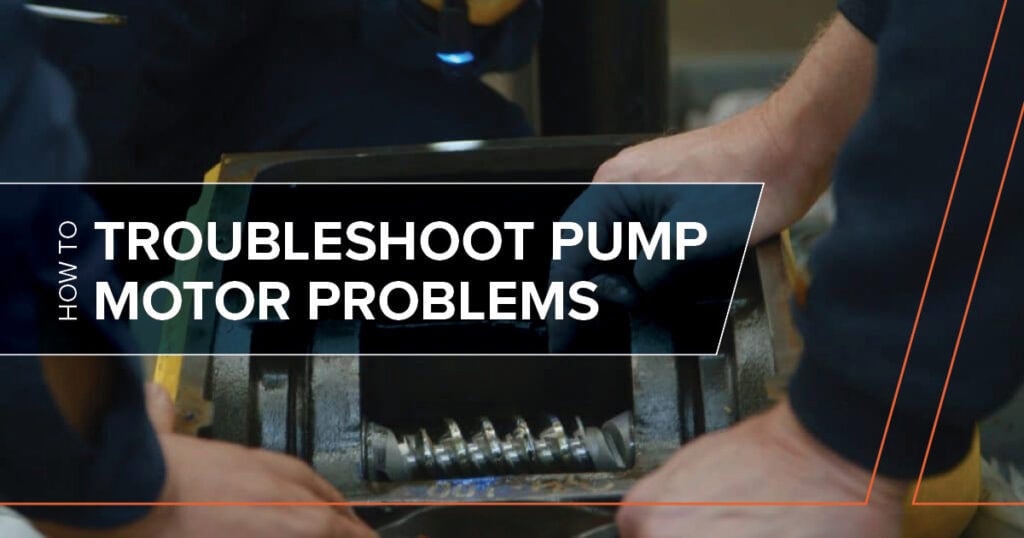Facilities and pump equipment are more prone to motor failures the older they become. Motors experience general wear and tear with years of use. Electrical issues or other external factors may lead to equipment damage. Even with an exceptional maintenance and inspection plan, pump motor problems will happen eventually. In some cases, pump motors can be problematic from the start. You may find yourself troubleshooting problems and spending excess time and money on frequent repairs.
In the latter situation, you may consider purchasing a new pump motor. It may be worth the up-front expense to have a more reliable and durable drive system powering your equipment. A faulty motor will cause nothing but headaches, and it will also affect the performance and longevity of the equipment it is running.
Dealing with Pump Motor Failures
In most cases, you take the necessary steps to keep your motor running as effectively as possible for as long as it is in service. You want to receive the maximum lifespan out of your pump motor. Having a proper preventative maintenance plan and performing routine inspections and tests are the best ways to achieve this. In addition, manage your drive system correctly. Pushing it beyond its capabilities will likely increase the chances of problems occurring.
Next, have an effective troubleshooting process when motor problems occur. Whether it’s a complete failure or various performance issues, smart operators know how to deal with the situation. Here are a few helpful tips to better troubleshoot pump motor problems:
Know Your Equipment
Good troubleshooting starts with knowing the equipment inside and out. Read the operating manual for best practices when it comes to operation and maintenance. Inspect and test the drive system equipment frequently. Train anyone operating the equipment to have a strong understanding of how the motor works, common problems it can experience, and how to deal with them. This way you and your staff are more prepared if and when problems occur.
Inspections and Maintenance
Performing routine inspections, tests, and maintenance tasks is one of the best ways to understand your equipment. Regularly scheduled maintenance is not only good for the long-term health and performance of the equipment. It’s good for the operator to understand as much as they can about the machinery itself. You have a better chance of catching minor issues before they develop into major problems. At the very least, you know what to look for when something goes wrong.
Isolate the Issue
When a problem occurs with your pump motor, identify the source of the issue. Running isolated tests can be one way to achieve this. Disconnect one component to see if another component is failing. Perhaps you know there’s a problem with a cooling fan. Isolated testing and troubleshooting can determine if the actual issue is with the fan, the belt, or something else.
Use Technology
Today’s pump systems are more advanced than ever. In addition, monitoring and control systems, diagnostics equipment, and predictive maintenance technology can identify and address problems more efficiently. Use this technology to your advantage for more effective troubleshooting.
Hire an Expert
If you aren’t sure what the problem is or why certain issues keep happening with your pump motor or other equipment, you can always lean on the expertise of a professional pump service provider. These experts are specifically trained in all aspects of pump management, including troubleshooting problems and making proper repairs. Rather than trying to figure it out yourself and becoming frustrated because the motor keeps breaking down, let a specialist do what they do best to ensure it is repaired correctly the first time.
These are methods for better pump motor troubleshooting and maintenance. For all your pump management needs—including on-site and off-site pump repair services—contact DXP Pacific today.

